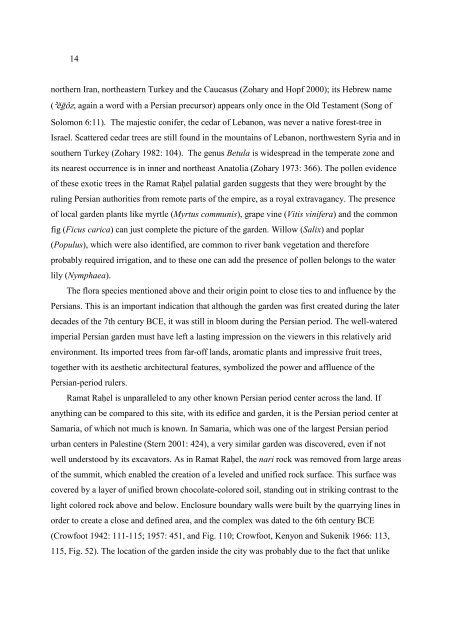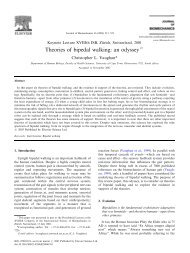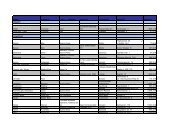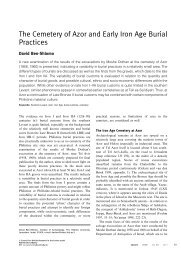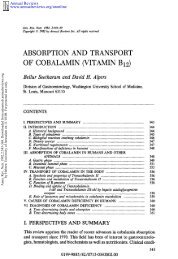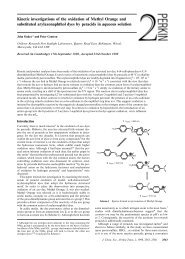The Riddle of Ramat Raḥel: The Archaeology of a Royal Persian ...
The Riddle of Ramat Raḥel: The Archaeology of a Royal Persian ...
The Riddle of Ramat Raḥel: The Archaeology of a Royal Persian ...
You also want an ePaper? Increase the reach of your titles
YUMPU automatically turns print PDFs into web optimized ePapers that Google loves.
14northern Iran, northeastern Turkey and the Caucasus (Zohary and Hopf 2000); its Hebrew name(´égôz, again a word with a <strong>Persian</strong> precursor) appears only once in the Old Testament (Song <strong>of</strong>Solomon 6:11). <strong>The</strong> majestic conifer, the cedar <strong>of</strong> Lebanon, was never a native forest-tree inIsrael. Scattered cedar trees are still found in the mountains <strong>of</strong> Lebanon, northwestern Syria and insouthern Turkey (Zohary 1982: 104). <strong>The</strong> genus Betula is widespread in the temperate zone andits nearest occurrence is in inner and northeast Anatolia (Zohary 1973: 366). <strong>The</strong> pollen evidence<strong>of</strong> these exotic trees in the <strong>Ramat</strong> <strong>Raḥel</strong> palatial garden suggests that they were brought by theruling <strong>Persian</strong> authorities from remote parts <strong>of</strong> the empire, as a royal extravagancy. <strong>The</strong> presence<strong>of</strong> local garden plants like myrtle (Myrtus communis), grape vine (Vitis vinifera) and the commonfig (Ficus carica) can just complete the picture <strong>of</strong> the garden. Willow (Salix) and poplar(Populus), which were also identified, are common to river bank vegetation and thereforeprobably required irrigation, and to these one can add the presence <strong>of</strong> pollen belongs to the waterlily (Nymphaea).<strong>The</strong> flora species mentioned above and their origin point to close ties to and influence by the<strong>Persian</strong>s. This is an important indication that although the garden was first created during the laterdecades <strong>of</strong> the 7th century BCE, it was still in bloom during the <strong>Persian</strong> period. <strong>The</strong> well-wateredimperial <strong>Persian</strong> garden must have left a lasting impression on the viewers in this relatively aridenvironment. Its imported trees from far-<strong>of</strong>f lands, aromatic plants and impressive fruit trees,together with its aesthetic architectural features, symbolized the power and affluence <strong>of</strong> the<strong>Persian</strong>-period rulers.<strong>Ramat</strong> <strong>Raḥel</strong> is unparalleled to any other known <strong>Persian</strong> period center across the land. Ifanything can be compared to this site, with its edifice and garden, it is the <strong>Persian</strong> period center atSamaria, <strong>of</strong> which not much is known. In Samaria, which was one <strong>of</strong> the largest <strong>Persian</strong> periodurban centers in Palestine (Stern 2001: 424), a very similar garden was discovered, even if notwell understood by its excavators. As in <strong>Ramat</strong> <strong>Raḥel</strong>, the nari rock was removed from large areas<strong>of</strong> the summit, which enabled the creation <strong>of</strong> a leveled and unified rock surface. This surface wascovered by a layer <strong>of</strong> unified brown chocolate-colored soil, standing out in striking contrast to thelight colored rock above and below. Enclosure boundary walls were built by the quarrying lines inorder to create a close and defined area, and the complex was dated to the 6th century BCE(Crowfoot 1942: 111-115; 1957: 451, and Fig. 110; Crowfoot, Kenyon and Sukenik 1966: 113,115, Fig. 52). <strong>The</strong> location <strong>of</strong> the garden inside the city was probably due to the fact that unlike


